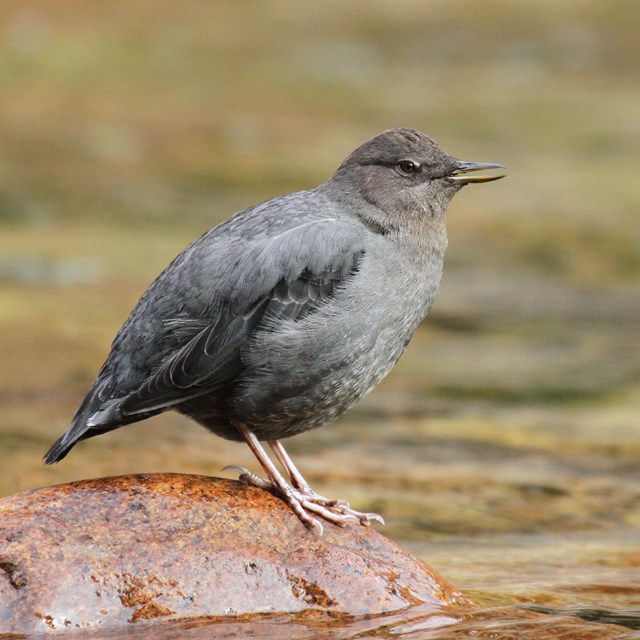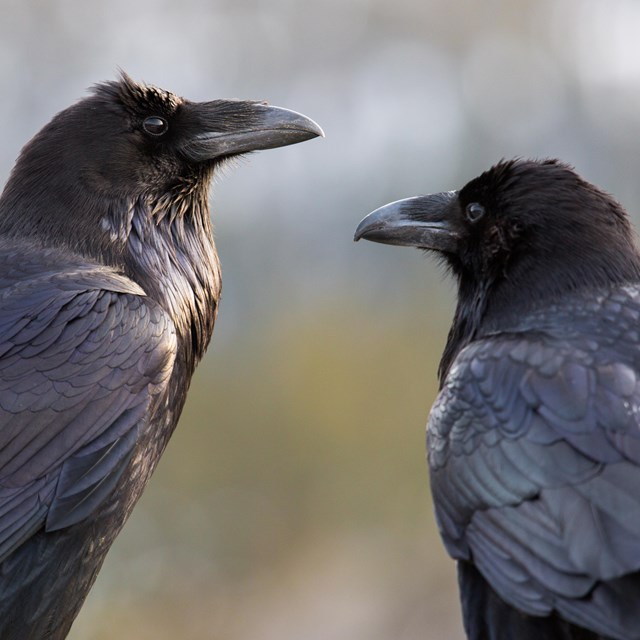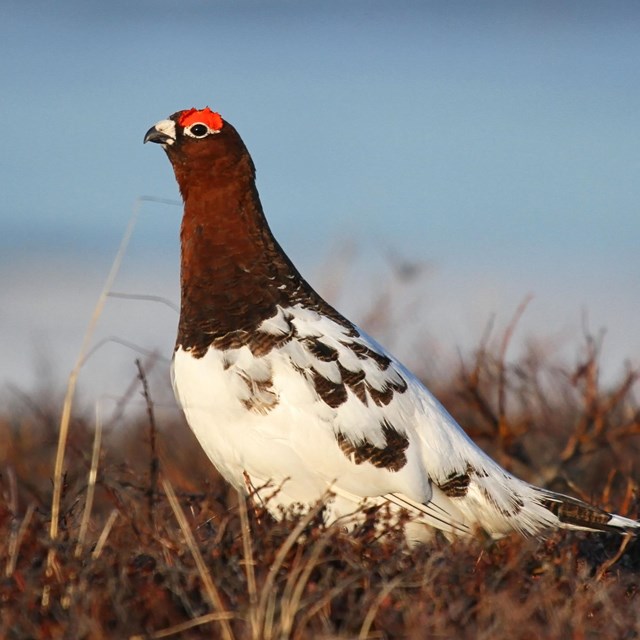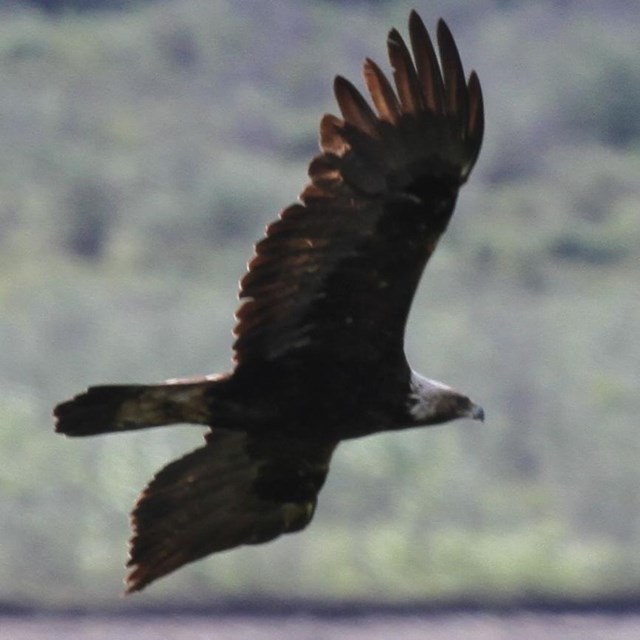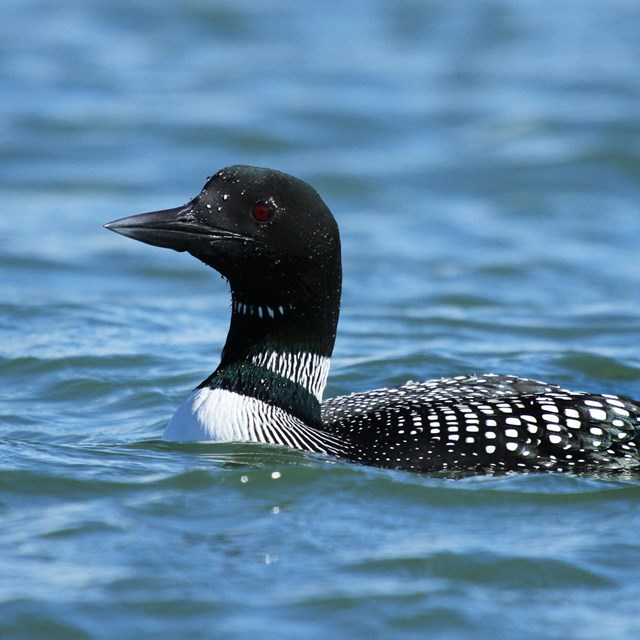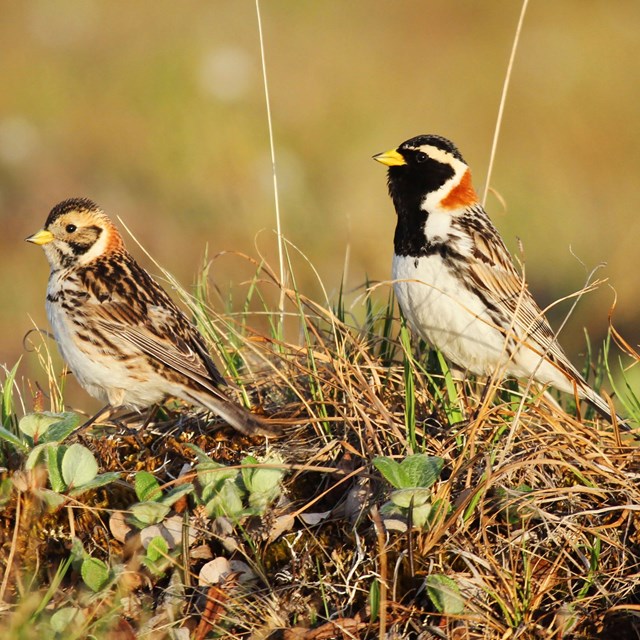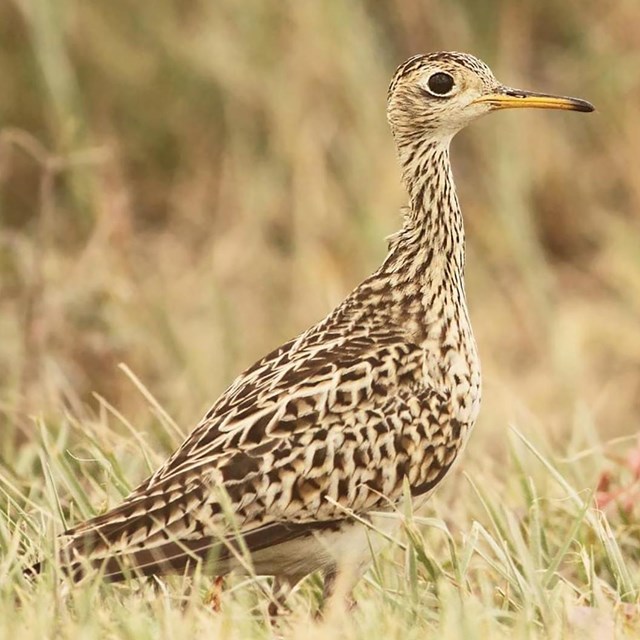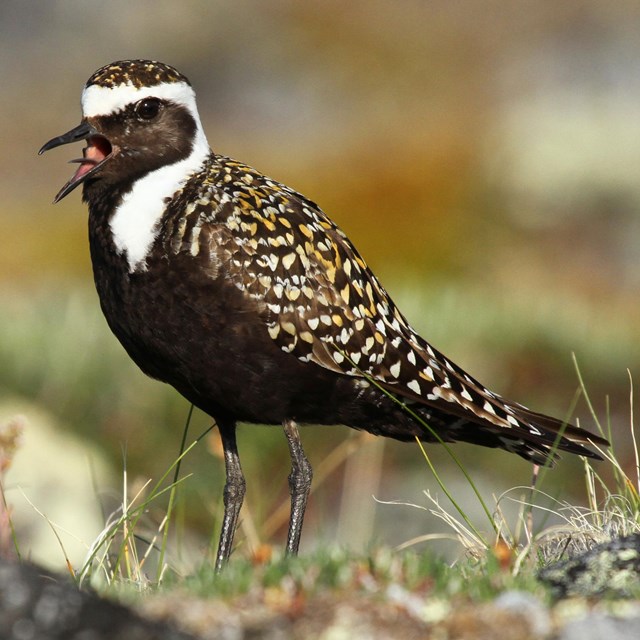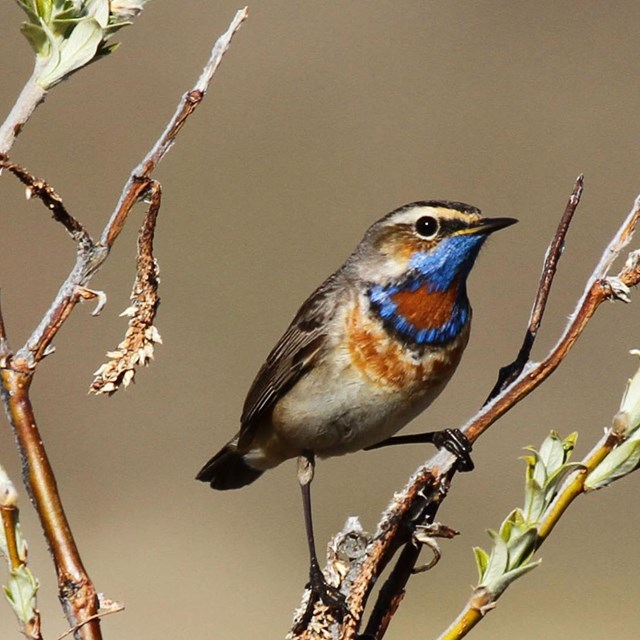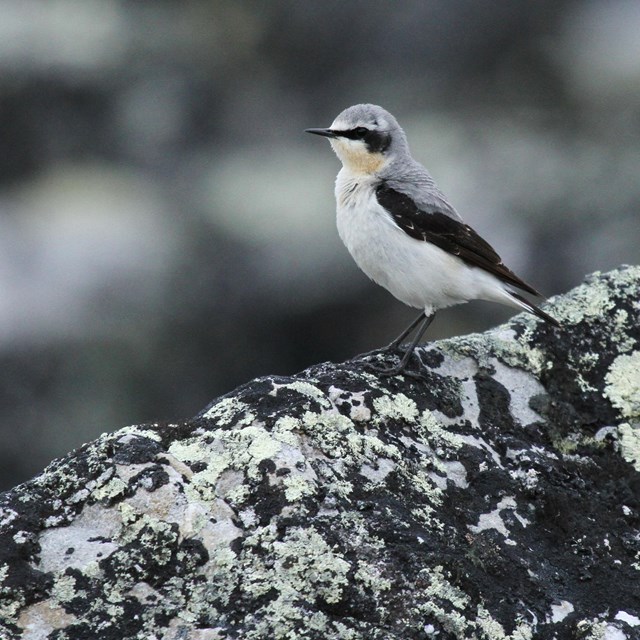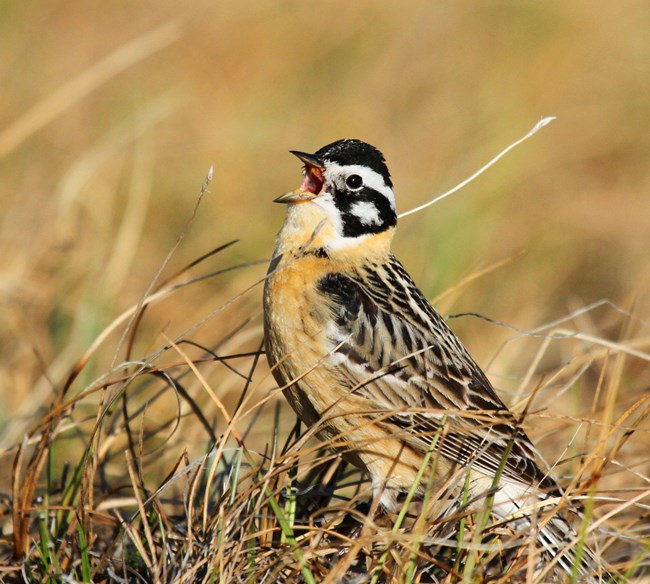
Jared Hughey/NPS Birds, like people, come from all over the world to visit Gates of the Arctic National Park and Preserve. Each spring, birds make extraordinary journeys, from distant places, to return to the Arctic to access the summer’s bounty of food resources and a super abundance of daylight— both enhance their ability to provision and care for chicks. The mostly mountainous and vast area of the park provides ample space for alpine species to breed. Long stretches of Wild and Scenic rivers, that originate in perennial snow fields high in the mountains and carve their way down steep slopes into broad valleys, provide other species with riparian habitat along the river to nest and raise young. 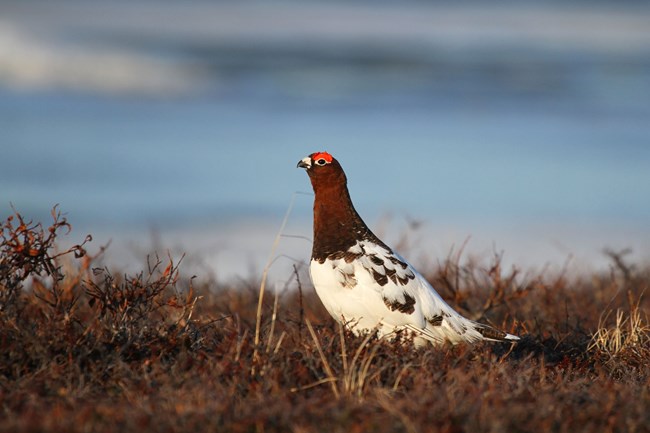
Jared Hughey/NPS Over the last half century, populations of birds in North America have experienced dramatic declines due to human activities. Though the park affords protection for all of the birds (over 100 species) that inhabit Gates of the Arctic, a rapidly warming Arctic is affecting many species, and bird communities of the park are expected to change in the coming decades as rising temperatures support an increase in deciduous shrub cover, especially in tundra and riparian habitats. Likewise, a warmer Arctic will lead to continued thawing of permafrost, changing the chemistry of streams and rivers as well as the structure of landscapes, which will ultimately reshape floral and faunal communities. Additionally, because most birds migrate to the park and spend a larger portion of their lives elsewhere, they are also affected by environmental change on their wintering grounds and along their migratory routes. Critical stopover and wintering sites are physically altered or lost altogether to human development; man-made structures like buildings cause window strikes, light pollution from cities disrupt nocturnal migration, and domestic cats kill 1.3 - 4.0 billion birds in the United States each year. For some species, the disruption of their nonbreeding areas may be the main cause for their decline. View a list of bird species in Gates of the ArcticMigration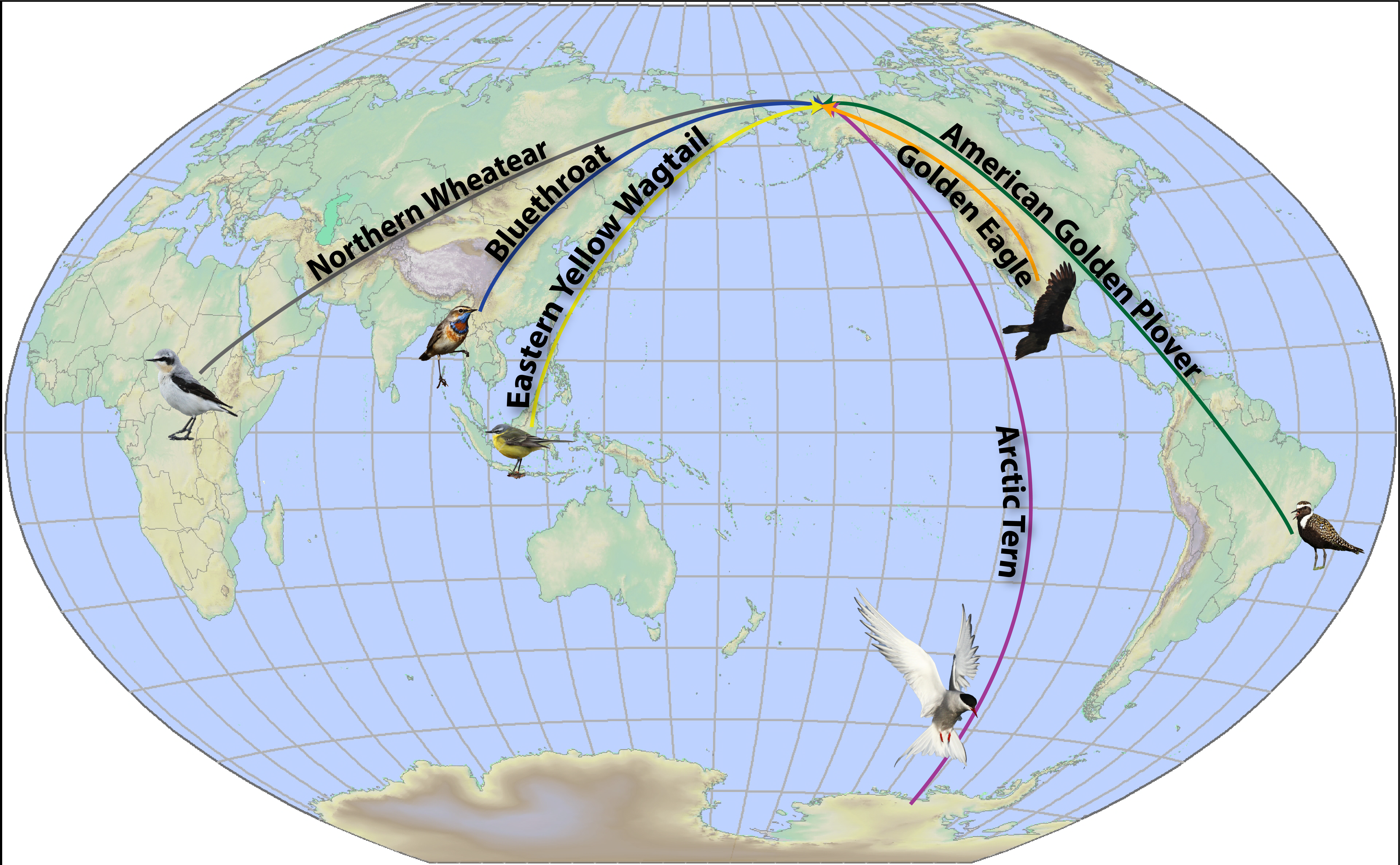
Migratory birds are the only other beings, apart from park visitors, that connect Gates of the Arctic with the world. Migratory birds are the feathered ambassadors of our planet; they connect water, land, air, and us to other people, cultures, and countries far away. Their journeys are staggering and, unlike those of park visitors, they are made entirely under their own power, wing beat by wing beat. The longest journey, roughly 15,000 miles from Antarctica, is made by the Arctic Tern but even the shortest, made by the Lapland Longspur, is thousands of miles. The Northern Wheatear, a small songbird (18-30 grams), makes an epic 9,000-mile trip across Asia from their wintering grounds in Sub-Saharan Africa to arrive at Gates of the Arctic. The American Golden-Plover will make non-stop transoceanic flights from the grasslands of Argentina to the Gulf of Mexico before continuing to the Arctic. The Eastern Yellow Wagtail migrates from southeast Asia across deserts, resting in sparse oases, to return to Gates of the Arctic. All of them encounter numerous dangers along the way. Storms and headwinds force them to expend extra energy on flights. Places where they once refueled and rested on past migrations may be modified by humans such that they provide little refuge and food. At some stopover locations, they may be hunted for food or captured for exotic animal markets. All these challenges underscore the importance of Gates of the Arctic—a large Arctic wilderness that countless generations of birds have relied on to raise offspring and perpetuate their species.
A Montane Bird CommunityMany birds that migrate to the park breed in the mountains —a dominant feature that covers more than 50% of Gates of the Arctic. These montane birds include songbirds (passerines, e.g. Northern Wheatear), near-passerines (e.g. woodpeckers), birds of prey (raptors, e.g. Golden Eagle), and heavy-bodied, ground-feeding birds (Galliformes, e.g. Willow Ptarmigan). Several species have a large part of their breeding range within the park. The Northern Wheatear, American Pipit, Gray-crowned Rosy Finch, and Smith’s Longspur breed exclusively in montane habitats. Only a few birds live in the park all year such as Common Ravens, chickadees, American Dippers, and ptarmigan.Resident Species
Migrants from North America
Migrants from South America
Migrants from Asia and Africa
|
Last updated: September 16, 2021

